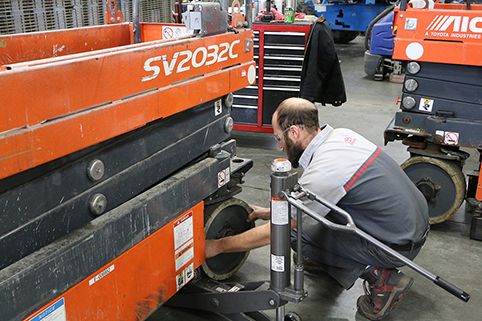Expert Lift Engineer Course: Training for Leading Lift Repair Companies Near Me
Expert Lift Engineer Course: Training for Leading Lift Repair Companies Near Me
Blog Article
Comprehensive Overview to Lift Systems and Their Upkeep
Browsing the elaborate globe of lift systems and their upkeep is a job that requires accuracy and understanding. From the various kinds of lift systems in use to the careful adherence to safety and security policies, the upkeep of these vertical transport devices is a complex undertaking.
Sorts Of Elevator Solutions
The most typical kinds include hydraulic elevators, traction lifts, machine-room-less elevators, and vacuum elevators. Hydraulic lifts are perfect for low-rise structures and use a hydraulic piston to relocate the lift car. Machine-room-less lifts are a space-saving option as they do not require a different machine space for the elevator machinery.
Each kind of lift system has its very own advantages and drawbacks, making it crucial for structure proprietors and programmers to carefully consider their details needs before picking the most appropriate choice. Variables such as constructing elevation, area schedule, energy performance, and spending plan restraints all play a substantial function in figuring out the very best elevator system for a specific building.
Common Upkeep Issues
Regular maintenance of lift systems is vital to ensure smooth procedure and extend their life-span. Regardless of regular maintenance, lift systems can still come across usual upkeep issues that need to be immediately dealt with to stop disruptions in service. Routine evaluations and positive upkeep can help recognize and fix these typical upkeep problems prior to they escalate and influence the overall performance of the lift system.
Security Regulations and Conformity
Complying with rigorous security laws and making sure compliance with sector requirements are critical for preserving the functional integrity of lift systems. Lifts go through a comprehensive set of safety policies to guard guests, maintenance employees, and the basic public. Regulative bodies such as the Occupational Security and Health Management (OSHA) in the USA and the European Lift Association (ELA) in Europe establish standards that cover numerous aspects of elevator style, operation, installment, and maintenance.
Conformity with these policies is not only a lawful need but also an ethical commitment for structure proprietors and lift upkeep business. Failure to satisfy security requirements can result in penalties, lawful obligations, and, most importantly, endanger the safety of people using the elevator. Routine evaluations, maintenance checks, and adherence to safety and security protocols described in the laws are necessary to ensure the effective and risk-free procedure of lift systems. By focusing on safety policies and conformity, stakeholders can promote the trust of the public and reduce possible risks linked with elevator use.
Best Practices for Upkeep

Structure owners should also consider investing in modernization upgrades to boost the effectiveness and safety of their lift systems. By complying with these ideal methods, lift systems can operate efficiently and safely, giving trustworthy vertical transportation for owners.

Advanced Technologies for Performance
Executing advanced innovations in elevator systems can considerably improve functional efficiency and guest experience. lift repair companies near me. One of the key innovations in elevator technology is the intro of location control systems. These systems enable travelers to input their desired flooring prior to getting in the lift, which after that guides them to the most reliable cars and truck. By lessening unnecessary stops and maximizing travel paths, location control systems minimize wait times and congestion in high-traffic structures.
Additionally, the assimilation of smart sensing units and predictive maintenance capacities has actually reinvented lift maintenance. These sensors can detect prospective issues prior to they rise, allowing aggressive maintenance treatments and reducing downtime. In addition, making use of energy-efficient parts and regenerative drives aids decrease power intake and operating costs in elevator systems.
In addition, the application of cloud-based surveillance and remote diagnostics enables real-time tracking of elevator efficiency and prompt troubleshooting of any malfunctions. This aggressive approach not only enhances system reliability however likewise boosts the general individual experience by guaranteeing nonstop and smooth elevator operations.
Conclusion
In final thought, recognizing the various types of elevator systems, typical maintenance problems, safety and security regulations, best maintenance techniques, and advanced technologies for efficiency is vital for ensuring the smooth operation of lifts. By sticking to safety regulations and executing best practices for upkeep, building owners can extend the life expectancy of their elevator systems and guarantee lift maintenance london the security of passengers. It is very important to stay updated on the most up to date developments in elevator technology to improve efficiency and integrity.
The most typical types include hydraulic elevators, grip lifts, machine-room-less elevators, and vacuum elevators. Get More Info Hydraulic lifts are excellent for low-rise structures and make use of a hydraulic piston to relocate the elevator vehicle. Machine-room-less elevators are a space-saving choice as they do not require a different equipment space for the elevator machinery. Normal assessments and positive maintenance can aid determine and solve these typical maintenance concerns before they intensify and affect the overall efficiency of the elevator system.

Report this page